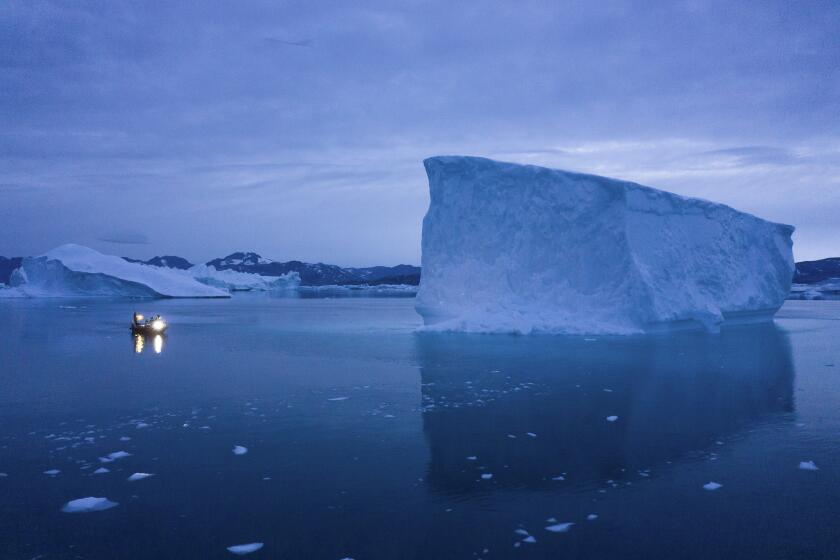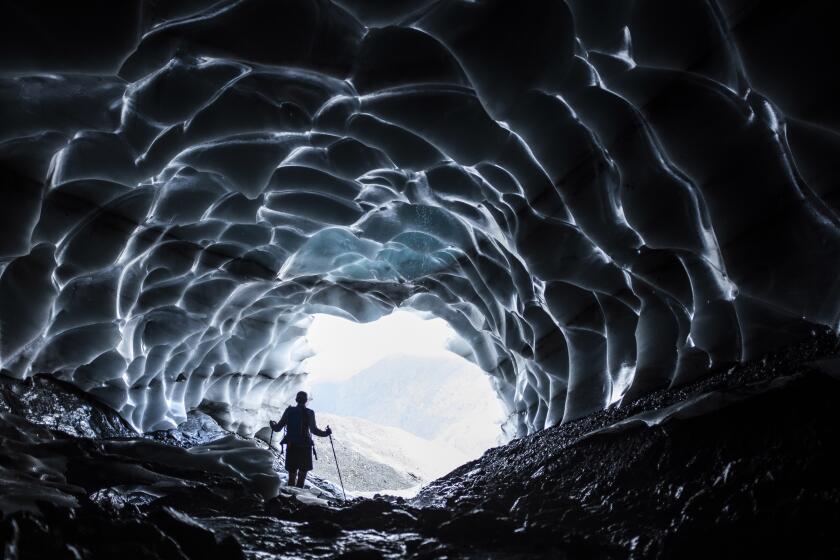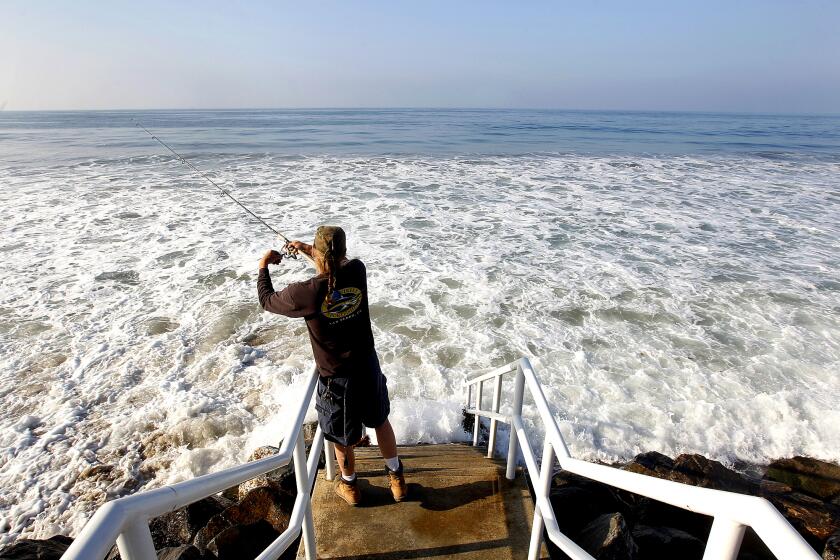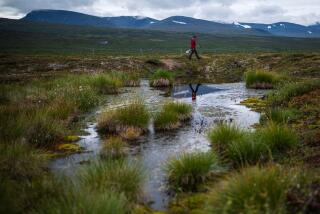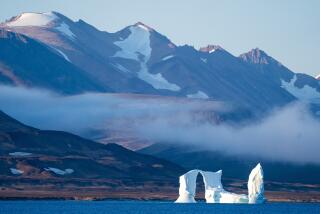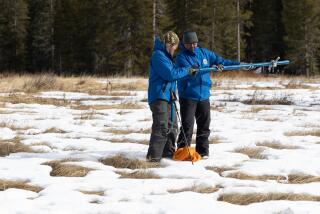Two-thirds of the world’s glaciers are on track to disappear by 2100, study says
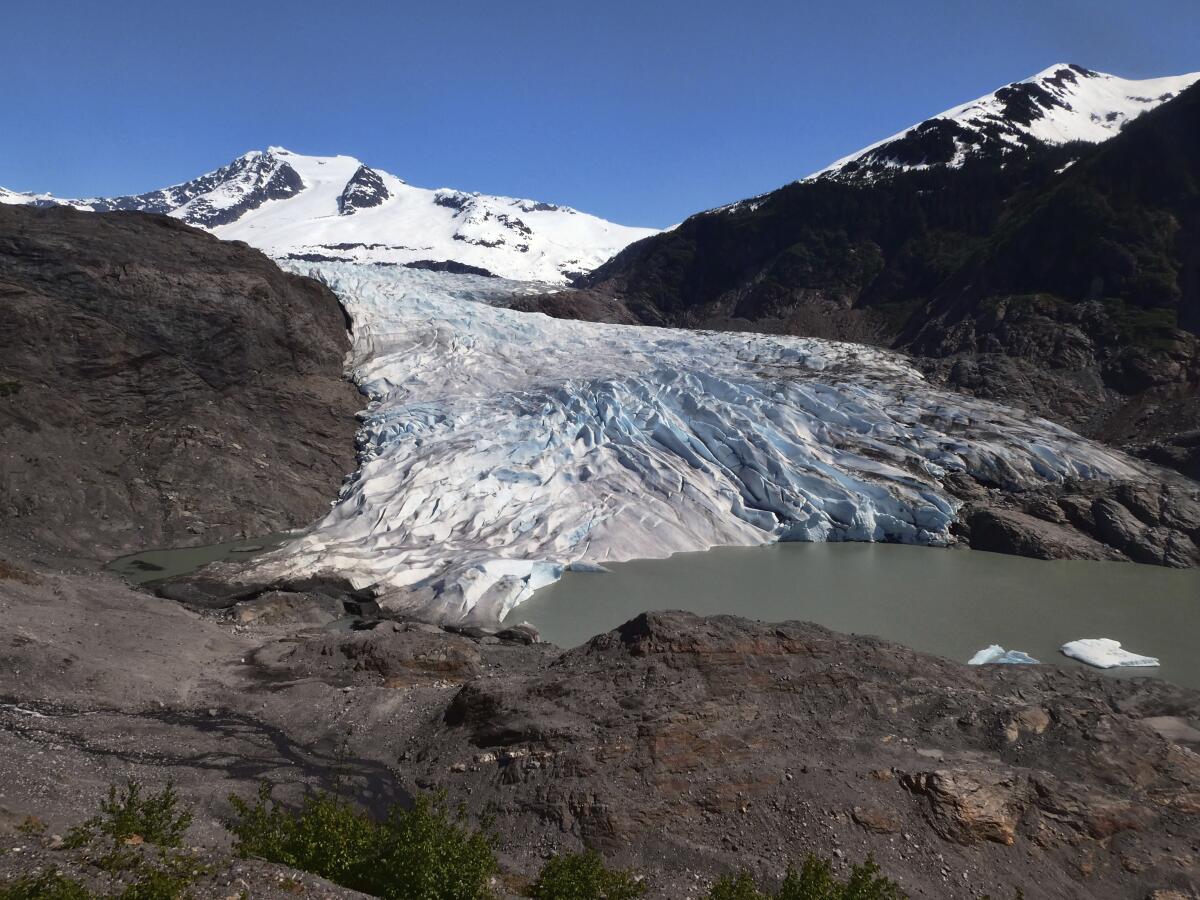
The world’s glaciers are shrinking and disappearing faster than scientists thought, with two-thirds projected to melt out of existence by the end of the century at current climate change rates, according to a new study.
But if the world can limit future warming to just a few additional tenths of a degree and fulfill international goals — possible but unlikely, according to many scientists — then slightly less than half the globe’s glaciers will disappear, the study said. Mostly small but well-known glaciers are marching to extinction.
In an also unlikely worst-case scenario of several degrees of warming, 83% of the world’s glaciers would likely disappear by the year 2100, the study said.
The study in Thursday’s edition of the journal Science examined all of the globe’s 215,000 land-based glaciers — not counting those on ice sheets in Greenland and Antarctica — in a more comprehensive way than past studies. Scientists used computer simulations to calculate, using different levels of warming, how many glaciers would disappear, how many trillions of tons of ice would melt and how much it would contribute to sea level rise.
The world is on track for a 4.9-degree temperature rise since preindustrial times, which by the year 2100 means 68% of glaciers disappearing, amounting to 32% of the world’s glacier mass, or 53.5 trillion tons of ice. That would increase sea level rise by 4 1/2 inches in addition to seas already growing larger from melting ice sheets and warmer water, said study lead author David Rounce.
“No matter what, we’re going to lose a lot of the glaciers,” said Rounce, a glaciologist and engineering professor at Carnegie Mellon University. “But we have the ability to make a difference by limiting how many glaciers we lose.”
Summer is hitting Greenland with record heat and extreme melt. By season’s end, about 440 billion tons of ice will have melted or calved off its ice sheet.
“For many small glaciers it is too late,” said study co-author Regine Hock, a glaciologist at the University of Alaska Fairbanks and the University of Oslo in Norway. “However, globally our results clearly show that every degree of global temperature matters to keep as much ice as possible locked up in the glaciers.”
Projected ice loss by 2100 ranges from 42.7 trillion tons to 71 trillion tons, depending on how much the globe warms and how much coal, oil and gas is burned, according to the study.
The study calculates that all that melting ice will add anywhere from 3½ inches to the world’s sea level in the best-case scenario to 6½ in the worst-case scenario — 4% to 14% more than previous projections.
That 4½ inches of sea level rise from glaciers would mean more than 10 million people around the world — including more than 100,000 in the U.S. — would be living below the high-tide line, said researcher Ben Strauss, chief executive of Climate Central. Sea level rise from climate change in the 20th century added about 4 inches to the surge from 2012 Superstorm Sandy, which by itself caused about $8 billion in damage, he said.
The crystal-clear waters issuing from the Alps in Europe could become increasingly contested as climate change and glacier melt become more apparent.
Scientists say future sea level rise will be driven more by melting ice sheets than glaciers.
But the loss of glaciers is about more than rising seas. It means shrinking water supplies for a big chunk of the world’s population, more risk from flood events from melting glaciers and losing historical ice-covered spots from Alaska to the Alps to even near Mt. Everest’s base camp, several scientists told the Associated Press.
“For places like the Alps or Iceland ... glaciers are part of what makes these landscapes so special,” said National Snow and Ice Data Center Director Mark Serreze, who wasn’t part of the study but praised it. “As they lose their ice, in a sense they also lose their soul.”
Hock pointed to the Vernagtferner Glacier in the Austrian Alps, which is one of the best-studied glaciers in the world, and said “the glacier will be gone.”
The U.S. coastline is expected to experience as much sea level rise in the next 30 years as it did in the hundred years prior.
The Columbia Glacier in Alaska had 216 billion tons of ice in 2015, but with just a few additional tenths of a degree of warming, Rounce calculated that it would shrink to half that size. If there’s 7.2 degrees Fahrenheit of warming compared with preindustrial times, an unlikely worst-case scenario, it will lose two-thirds of its mass, he said.
Glaciers are crucial to people’s lives in much of the world, said National Snow and Ice Center Deputy Lead Scientist Twila Moon, who wasn’t part of the study.
“Glaciers provide drinking water, agricultural water, hydropower, and other services that support billions (yes, billions!) of people,” Moon said in an email.
In most cases, the estimated loss figures that Rounce’s team came up with are slightly more dire than earlier estimates.
Our oceans. Our public lands. Our future.
Get Boiling Point, our new newsletter exploring climate change and the environment, and become part of the conversation — and the solution.
You may occasionally receive promotional content from the Los Angeles Times.
If the world can somehow limit warming to the global goal of 2.7 degrees Fahrenheit of warming since preindustrial times — the world is already at 2 degrees Fahrenheit — Earth will probably lose 26% of total glacial mass by the end of the century, which is 42.7 trillion tons of ice melting. Previous best estimates had that level of warming resulting in 18% of total mass loss.
More to Read
Sign up for Essential California
The most important California stories and recommendations in your inbox every morning.
You may occasionally receive promotional content from the Los Angeles Times.
